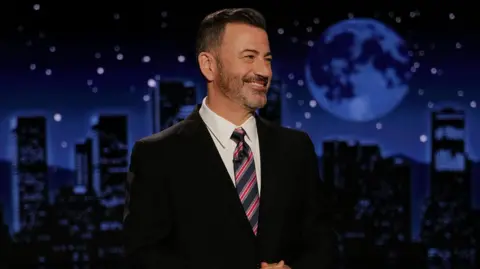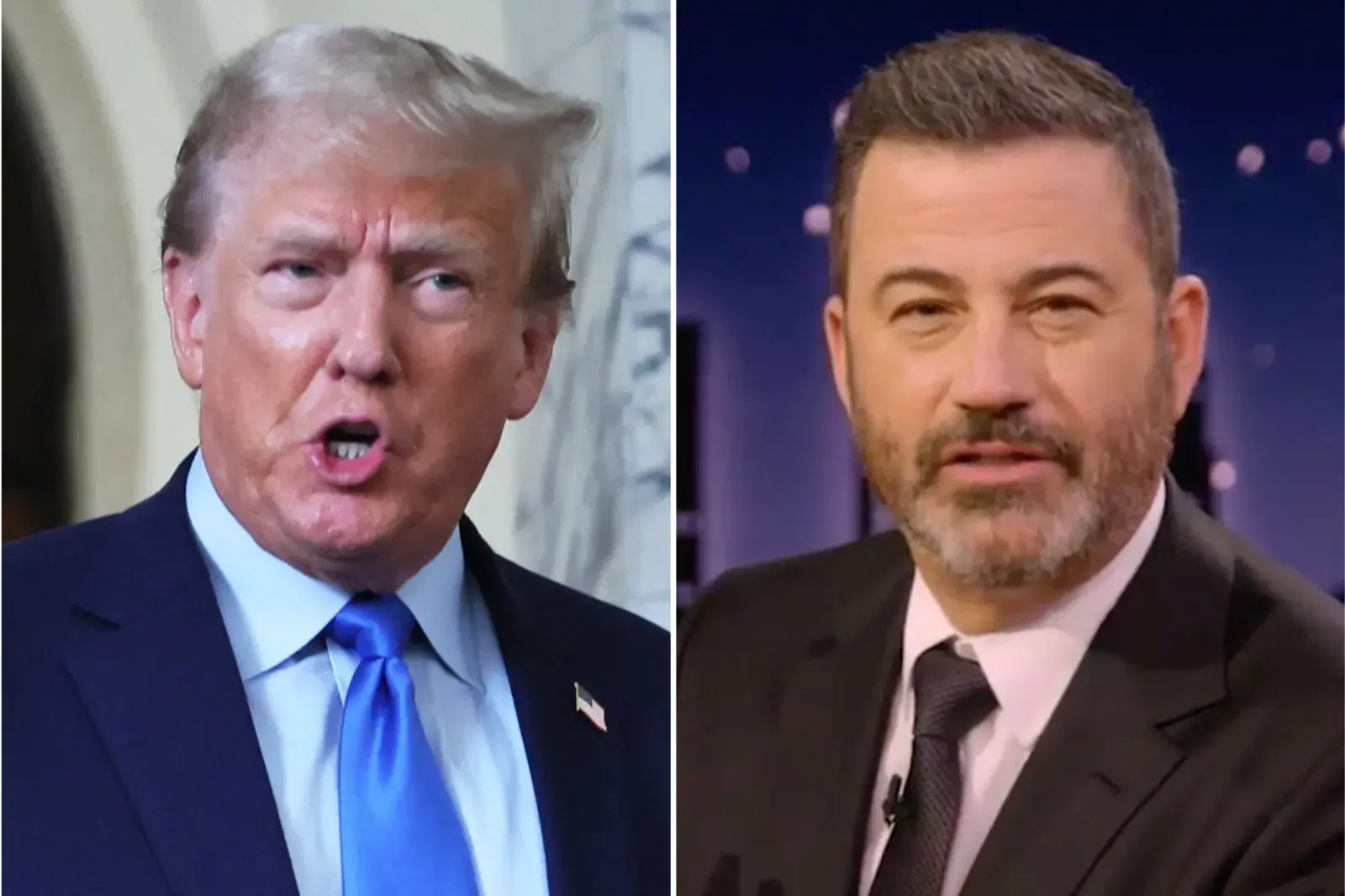“Jimmy Kimmel Live!” drew an estimated 6.26 million broadcast viewers on Tuesday for the host’s first episode back after a nearly weeklong suspension, the show’s biggest audience in years and, according to ABC, the highest-rated regularly scheduled installment in a decade—even though the program was not carried by roughly a quarter of U.S. ABC affiliates. Nielsen data cited by the network showed the broadcast delivered a 0.87 rating among adults 18 to 49, up sharply from the show’s season average, while clips from Kimmel’s opening monologue amassed more than 26 million views on YouTube and other platforms by Wednesday evening. ABC said the surge came as viewers tuned in to hear Kimmel address the remarks that led to his benching and to watch him reassert the show’s comedic line after days of political and regulatory crossfire.

The audience total—about four times the show’s recent average of 1.42 million linear viewers—was recorded despite preemptions by station groups Nexstar Media Group and Sinclair Broadcast Group, which together own or operate ABC affiliates reaching approximately 23% of U.S. TV households. Those blackouts meant the return episode did not air over-the-air in markets including Seattle, Salt Lake City, Nashville, New Orleans and Washington, D.C., though it remained available on ABC’s owned stations and on Disney streaming platforms. ABC did not include streaming in the 6.26 million figure, which reflects same-day linear viewing.
The network framed the result as a 10-year high for a regularly scheduled “Kimmel,” underscoring how unusual the spike was for a late-night franchise that, like its peers, has seen linear audiences erode as younger viewers migrate to clips on social platforms. Reuters reported that ABC pegged the episode at 6.26 million viewers and noted that the monologue alone drew about 26 million views on YouTube and Instagram by late Wednesday afternoon—an illustration of the show’s hybrid reach as affiliates withheld carriage.

The ratings performance quickly became a proxy for the week’s broader dispute over speech and broadcast discretion. Nexstar said Wednesday it would continue to preempt the show while “engaged in productive discussions with executives at The Walt Disney Company, with a focus on ensuring the program reflects and respects the diverse interests of the communities we serve.” Sinclair reiterated that it was keeping the program off its ABC stations for now. The combined preemptions left ABC with the unusual task of marketing a late-night flagship that, for many viewers, could be seen only via streaming or in neighboring markets.
Kimmel opened the broadcast with a 16-minute monologue that blended contrition with defiance. “It was never my intention to make light of the murder of a young man. I don’t think there’s anything funny about it,” he said, his voice catching as the studio audience stood. He went on to defend political satire against what he called “bullying,” a reference to days of criticism from the White House and from Federal Communications Commission chair Brendan Carr, who had publicly pressed affiliates to drop the program and warned of potential regulatory consequences.

The episode’s other headline moment was aimed at former President Donald Trump, who had used social media to deride Kimmel’s “talent” and “ratings” ahead of the broadcast. Kimmel played a clip of Trump’s remarks and answered, “Well, I do tonight!”—a line that drew prolonged applause and ricocheted online alongside the audience figures. Reuters recorded the exchange as part of a segment that paired ratings data with the monologue’s most replayed sound bites.

Nielsen’s demographic reading supplied the second data point ABC emphasized: a 0.87 rating in adults 18-49, the show’s best single-episode performance in that cohort since March 2015, compared with a 0.13 average last season. The contrast—along with the overall audience figure—helped explain why trade and general-interest outlets characterized the night as an outlier for a franchise that typically posts steady but modest linear numbers before finding scale on YouTube the following day. CBS News, which reviewed Disney’s release and Nielsen figures, said the audience was “about four times larger than average.”
The decision by two major station groups to hold the line on preemptions—despite the show’s reinstatement—remained a complicating factor as the numbers settled. Nexstar operates 33 ABC affiliates and Sinclair 38; both said this week they would keep substituting local news or syndicated programming in Kimmel’s time slot while talks continue, an uncommon split between a network’s scheduling call and its distribution partners’ editorial judgments. Variety reported that neither company had put a timetable on when carriage might resume.
For Disney, the episode represented a test of whether a corporate reversal—lifting the suspension after six days—could stabilize a flagship title under political scrutiny. The company said it had paused “Jimmy Kimmel Live!” to avoid inflaming tensions after the host’s Sept. 15 remarks about the man accused of assassinating conservative activist Charlie Kirk, and then brought the program back following “thoughtful conversations” with Kimmel. The return, coupled with the night’s ratings data, offered a short-term answer on audience appetite even as negotiations with affiliates continue. Reuters summarized the sequence and noted that social-video accumulation amplified the episode’s reach well beyond the linear window.
The numbers also provided fodder for rivals and supporters to recalibrate their arguments. Advocates for reinstatement seized on the 6.26 million figure as evidence that viewers wanted to hear from Kimmel directly, while detractors argued that controversy reliably produces a ratings spike that says little about long-term trends. ABC’s internal comparison—1.42 million average linear viewers across the 2024-25 season versus Tuesday’s 6.26 million—underlined the delta without making claims about durability. CBS News highlighted the differential and stressed that the reported total excludes streaming and delayed viewing.
Political context remained close to the surface. Reuters reported that before Disney lifted the suspension, Carr had urged stations to drop the show and warned, “We can do this the easy way or the hard way,” a formulation that drew pushback from Democrats and some Republicans, including Senator Ted Cruz, who said programming decisions should not be coerced by the government. Kimmel, who thanked conservatives who supported his right to speak while disagreeing with his views, referenced the outcry as he made the case that late-night comedy should be insulated from regulatory threats.
The night’s outsize performance also reflected a long-running shift in how late-night is consumed. Even as affiliates blocked the broadcast in several markets, ABC said Kimmel’s monologue collected more than 26 million social-video views within a day—an illustration of how a marquee clip can find national, even global, scale independent of linear clearance. Local outlets owned by Gray Television reported similar tallies while noting that ABC’s count does not include Hulu or other streaming services that carry full episodes after broadcast.
One contested point on Wednesday was how to situate the episode historically. The New York Post characterized it as the most-watched regularly scheduled “Kimmel” in the show’s 22-year history, citing the 6.3 million live-plus-same-day figure; ABC’s own framing to other outlets was more conservative, calling it the biggest in a decade. Trade publications that typically track late-night over longer windows noted that whichever phrasing is used, Tuesday’s linear total is a dramatic outlier for the franchise’s current era.
The standoff with affiliates clouds the near-term picture. Nexstar and Sinclair together account for dozens of ABC stations, including in mid-to-large markets where late-news lead-ins are strong, and both indicated they would maintain their positions “for the foreseeable future” pending further talks with ABC. CBS News reported that the companies’ statements left open whether any conditions—such as an on-air apology or donations tied to Kirk’s family—would be sought, a question that has hovered over the blackout but was not addressed on Tuesday’s broadcast.
For now, the empirical record is fixed: Disney suspended “Jimmy Kimmel Live!” on Sept. 17; announced on Sept. 22 that the program would return; and, on Sept. 23, delivered a reinstatement episode that drew 6.26 million broadcast viewers and a top-demo rating not seen on the show since 2015, even as about 23% of U.S. households could not watch over the air because their local ABC affiliates preempted it. That combination—a linear spike, robust social reach and incomplete distribution—produced a night in which viewership milestones and a distribution fight coexisted, each reinforcing the other’s visibility.
Kimmel’s on-air language signaled how he intends to proceed. He repeated that “it was never my intention to make light of the murder of a young man,” drew a line against government pressure on broadcasters and affiliates, and aimed a practiced barb at Trump’s pre-show taunts by pointing to the ratings in real time. ABC, for its part, leaned on the data: a fourfold increase over the show’s average audience, its best adults-18-49 rating in more than a decade, and tens of millions of cross-platform views within 24 hours. Those are the figures that carried across headlines as the industry measured whether a single night’s surge can be converted into something steadier if more markets come back online.
What happens next depends less on a single ratings scoreboard than on two parallel negotiations—one editorial, one distributional. Disney has already made its programming decision and Kimmel has restated his editorial posture; Nexstar and Sinclair must decide whether to restore the show in markets where they control ABC’s late-night slot. In the meantime, the episode’s data points will anchor the conversation: 6.26 million on broadcast, a 0.87 in the core demo, more than 26 million social views within a day, and a return that, by ABC’s telling, delivered the biggest regularly scheduled “Kimmel” in a decade. The audience was large enough that the show’s star could answer a familiar criticism in the moment. “You almost have to feel sorry for him,” Kimmel said after playing Trump’s charge that he had “no ratings.” The night’s numbers supplied their own rebuttal.